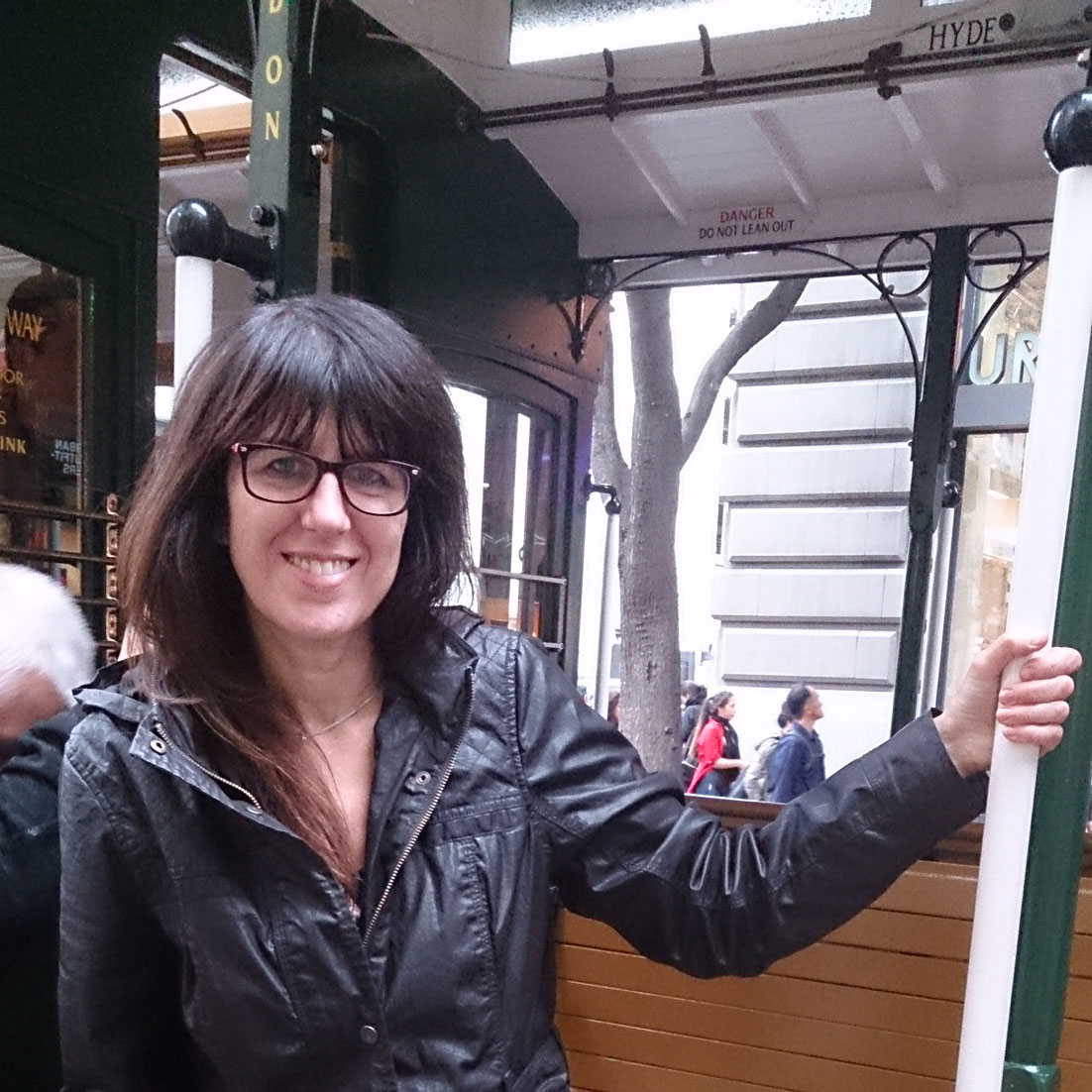The basic renovation mistakes I made and how not to follow in my footsteps
First reno or not, it's easier than you think to make mistakes along the way. Here's my story


I blame Real Homes! Since I started working on the magazine, it opened my eyes to what was achievable when it came to renovating a home, and how much I might be willing and able to tackle myself.
I’d done a little DIY on my first home. I’d scraped walls, papered and painted it top to bottom, stripped and stained the stairs. I’d even help to build the kitchen units and wardrobes from flatpacks... My cordless power drill was my favourite accessory.
But my new house was a bigger challenge in every sense. Not just physically, but in terms of my own ambitions for the changes I wanted to make.
In the first house, the need for improvements had been quite obvious. There was no kitchen beyond a sink unit and an oven, so everything that was lacking had to be replaced. And the cream scalloped suite and poo-brown tiles in the bathroom just had to go!
In house two, there was scope. A large villa-style semi, it had been owned by the local piano teacher who had two pianos and strip lighting in the front room. The middle room, the ‘music library’, had a pull-down bed in a large cupboard in front of the chimney breast, while the long kitchen had no cooker, or even space for one.
Upstairs, the large front bedroom had been turned into the piano teacher’s living room, complete with gas fire and four display units. The cramped (blue!) bathroom was out of proportion with the size of the rest of the house. And the cupboard in the third bedroom concealed a boiler, which I decided needed to be moved down to the kitchen asap. That might have been my first mistake… Here are the rest:
1. Starting without a plan
I could see the potential the house had and had ideas of how I could improve it to match the hazy, Instagram-inspired vision in my head. But actually sitting down and planning it room by room, and trying to see/predict how changes in one room might affect another, could have saved me some frustration/money. Case in point, the boiler. To make the bathroom bigger, I needed to knock into the third bedroom, right where the boiler was. It cost the better part of £800 to shift it downstairs to a wall in the kitchen between two windows. Two years later, when work started on the kitchen, it was a carbuncle that no amount of boxing in with new units would make look attractive. I ended up having a window bricked up (which was weirdly high with a view of a brick wall, so no loss) and the boiler moved a couple of feet to the left, to be housed in a cupboard matching the new larder units on the opposite side. Bricking in the window and moving the boiler cost nearly £500, and the bruises from kicking myself for not having it put there in the first place.
Get small space home decor ideas, celeb inspiration, DIY tips and more, straight to your inbox!
2. Impulse buying
We all want to save money, and buying salvaged, barely used or unwanted one-off pieces through Ebay, Facebook Marketplace or charity shops is the way to do it. But it’s easy to get carried away in pursuit of a bargain and buy something you think you’ll need in the future – but then discover you don’t as your scheme evolves. Your options then are
Two of my follies included buying a set of 1930s interior doors I was sure would match the remaining original doors in my home, which had inexplicably been boarded over sometime in the 1960s. Of course I should have removed all the boarding first, when I would've realised I was about three decades out and my doors (and house) are actually late Victorian/early Edwardian. The two 1930s doors remain in the garage, resisting my attempts to sell them.
And then there was the fireplace, Black cast iron with blue and white tile inserts; a thing of beauty. I won it on Ebay for £75, paid nearly as much again to have it shipped to me, and left it propped up in the dining room where it was to be my showpiece. I then knocked off all the plaster in the living and dining rooms to reveal the brick arches of the original fireplaces. My cast iron and tile beauty was redundant. Refusing to admit defeat (and relisting it), I instead had it installed in the master bedroom, even having a new fireplace surround and hearth made to accommodate it. And I don’t like it. Having spent more than £300 on it by now, I’m learning to lump it.
3. Not always being involved
Is helicopter contractees a thing? Maybe it should be. It can be tempting, once you’ve done your due diligence and checked out their work and got recommendations from other people they’ve done jobs for, to just let the tradespeople get on with it. But if you’re not on site while they are working, or even if you are and WFH in another room, try to be involved. Look at what they are doing and ask questions if you are uncertain whether a solution they propose will work for you, or if you’d prefer to spend more time/money trying something else. Remember that cowboy builders do exist... And can make your life hell.
My plumber, having boxed in some pipes beneath the bathroom sink, was convinced that perching half of the expensive, floor-standing metal sink frame I’d bought on the boxing would look great. And that spray painting the exposed water pipes that fed the taps black, was an acceptable workaround. I vehemently disagreed. And had to pay another plumber to come in and properly sink the pipes, fit a wall-hung frame and retile.
My plasterer, who had actually done a reasonable job of the wall in the spare bedroom, ran amok (or a-mess) when I left him to board and plaster the living and dining rooms that I’d stripped back to brick. Debris he was ‘going to clean up’ was inches thick. There were great globs of plaster staining my new hearth. A door surround was taken off and put back (badly), and a light switch was now jammed up against the corner of a wall. Sockets he fitted all wobbled. Lumps were knocked out of the original Victorian coving and not replaced, nor apologised for. It's work I've had to try repairing myself or paid (again) someone else to do. Yet when I repaint, I see the evidence of the shoddy finishing hidden under and around the windowsills and quietly curse him again...
4. Biting off more than I could chew
Now this one’s on me for trying to do a whole house at once. The result is that several rooms are nearly – but not quite – finished, so there is a sense of incompleteness across the whole house. The chimney in the dining room has been exposed but needs treating, while the new hearth tiles have been on a pallet for two years. A piece of cardboard put up in a side window to stop would-be thieves peering in, is still there after a year because I’ve filled the room with the contents of the kitchen I’ve started renovating and can’t get near enough to hang curtains. I had the lounge floor sanded and polished, but the strip of cracked cement where the boards end and the hearth begins remains an eyesore.
There are so many of these ‘little jobs’, they have a big impact psychologically. It’s holding me back because I never feel I am truly moving forward. There’s no pay-off of a room looking as ‘nice when it’s finished’ as people promised me it would when I embarked on this makeover ultra-marathon. Instead, I feel like a hoarder surrounded by unpacked boxes that I worry I’ll begin not to notice, and they’ll become more like part of the furniture than the actual (unbuilt) furniture they contain.
Before I end up as a cautionary tale to other renovators, I am determined to take myself in hand and GET THIS DONE. I've set myself deadlines (we journalists love those), and made my lists. I've learned (the hard way) from the renovation mistakes made, and I am content in the knowledge that what has been finished will have added value. My kitchen has a cooker for a start! But I need completion. I'm fed up living in the 'before' and 'during', I want my happy ever 'after shot', and it may, finally, be within reach.

Alison is Assistant Editor on Real Homes magazine. She previously worked on national newspapers, in later years as a film critic and has also written on property, fashion and lifestyle. Having recently purchased a Victorian property in severe need of some updating, much of her time is spent solving the usual issues renovators encounter.